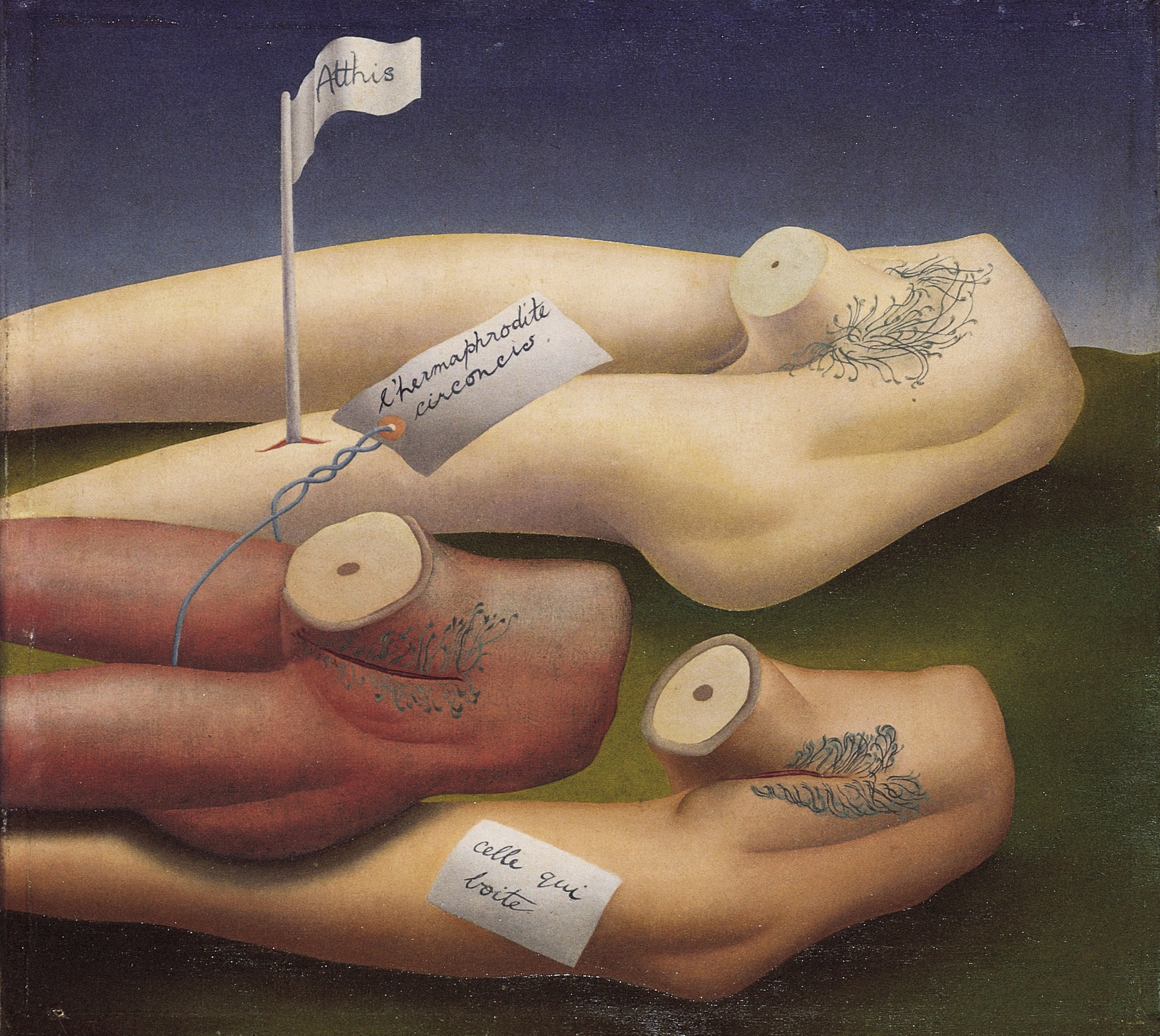
This year marks the official centenary of the birth of surrealism. To celebrate, Dulwich Picture Gallery recently opened British Surrealism, an ambitious and fresh take on this revolutionary movement.
Through over 70 eclectic works, British Surrealism surveys the origins of surrealist art in Britain. Using a variety of supporting archive material, it cleverly traces the roots back to 1620. Amongst the well-known greats of Bacon, Nash and Freud, there are revelatory works by unfamiliar yet innovative female figures including Marion Adnams, Ithell Colquhoun, Grace Pailthorpe and Leonara Carrington all of whom were united by a motivation to blur the boundaries between reality and dream.
Though the exhibition has temporarily closed and it is no longer possible to visit, we have brought you some of the works on display and a brief history of Leonara Carrington, a pioneering figure in the movement.

Leonora Carrington was perhaps one of the most remarkable of all the British Surrealists. Eternally humorous, cryptic and fiercely independent, her art explodes in all directions, redefining female symbolism and imagery.
Born into the bourgeoisie in 1930s Lancashire, Carrington renounced her privilege early on, preferring instead to pursue the life of an artist. She found her calling when she visited the first International Surrealist Exhibition in London in 1936, and was by then, steeped in myth and fantasy, having been brought up on folk tales from her Irish mother and nanny.
Sharing the Surrealists' keen interest in the unconscious mind and dream imagery, Carrington rejected the ideal of woman as a source of creative energy, instead turning to the animal world, autobiographical references, the occult, and Celtic myth, medieval alchemy, and Jungian psychology. Naturally drawn to the surreal, she once mused I am as mysterious to myself as I am mysterious to others.

Under Andr Breton's eye, the father of the movement, women were often cast as harpies, sorceresses, or sphinxes. Carrington adopted these guises herself as she drew on fables and folklore. Fantastic beasts and hybrid figures fill her canvasses, exploring themes of transformation and identity in an ever-changing world. Like many in the movement, Carrington also examined sexual identity, but unlike most, she drew on her life and friendships to represent women's self-perceptions, the bonds between women of all ages, and female figures within male-dominated environments and histories.
Surrealism is well known for limiting women's official participation both materially and ideologically, explains British writer and curator Sacha Lllewyn. Eileen Agar remarked that British surrealist women felt themselves to be a minority within a minority, and so 'took deviance as a principle of creativity'. Rather than submitting to the movement's deeply patriarchal discourses and largely in reaction to them the women surrealists mapped out their own autonomous identities.

They transformed the male surrealists' iconography of women to penetrate their own private dream states to create incredibly powerful works that were centred on the true nature of womanhood, she adds. Many of their pictures, for example, engage with the feminine archetype: woman as Goddess, Mother Earth Leonora Carrington is particularly powerful in this respect.
The artist's works were also influenced by her romantic relationships. In 1937, at a dinner in honour of the surrealist Max Ernst, the 20-year-old Carrington and the 46-year-old guest of honour fell instantly in love and shortly afterwards, ran off together. War fractured their whirlwind partnership, and when she learnt that German-born Ernst had been incarcerated as an enemy alien in 1939, she was propelled into a psychosis. After escape from a psychiatric hospital in Spain and a marriage to Mexican diplomat Renato Leduc, she found refuge and recovery in Mexico City, perhaps her biggest love, where she spent the rest of her life with her second husband the Hungarian-born photographer Chiki Weisz her two sons and an exiled creative community.

Carrington's 94 years of disruption and re-invention added a colourful chapter to the history of modern culture. You don't decide to paint, she once said. It's like getting hungry and going to the kitchen to eat. It's a need, not a choice.
Carrington was such a powerfully creative figure with a very distinct personal vision, says the exhibition's curator, David Haycock. Though madness' was romanticised by the surrealists, it pointed for them to genuine experience and visionary insight, Carrington broke out of the provincialism of mid-20th century England and escaped to Mexico, where she was deeply influenced by the new world around her. She left her mark with an extraordinary body of work, quite different from anything else created by a British surrealist of the period instantly recognisable, but weirdly potent.
Words by Charlotte Harding. All images courtesy of Dulwich Picture Gallery.

Image 1: Leonora Carrington with "Lepidotera," painted in 1969. December 04,1975. (Photo by Jerry Engel/New York Post Archives / (c) NYP Holdings, Inc via Getty Images) Image 2: Conroy Maddox, The Lesson, 1938/1970, Christie's Images Limited, Given with the kind permission of the artist's daughter. Image 3: Edith Rimmington, Family Tree, 1938, The Murray Family Collection (UK & USA) Estate of Edith Rimmington, Image 4: John Bigge, Composition, 1936, Photo: Ferens Art Gallery: Hull Museums, The Estate of John Bigge, Image 5: Sam Haile, Woman and Suspended Man, 1939, Manchester Art Gallery / Bridgeman Images. Image 6: Ithell Colquhoun, The Pine Family, 1940, Photo: The Israel Museum, Jerusalem, Samaritans, Spire Healthcare, and by kind permission of the Noise of Abatement Society, Image 7: Leonora Carrington, The Old Maids, 1947, Estate of Leonora Carrington / ARS, NY and DACS, London 2019, UEA 27. Sainsbury Centre for Visual Arts, University of East Anglia. Photographer: James Austin
Add a comment